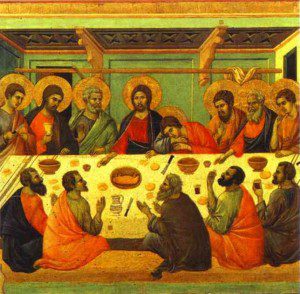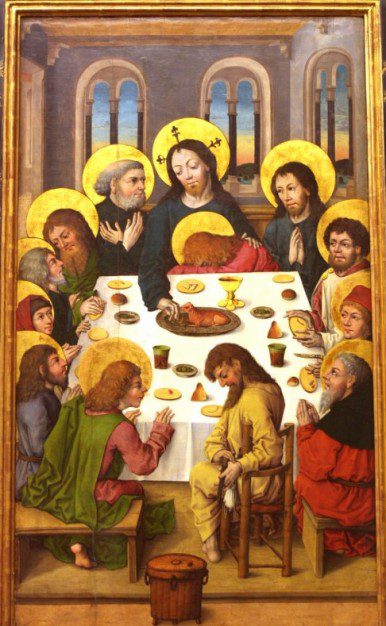A study of historic paintings of the Last Supper show that Jesus and the Disciples were served healthy portions … at least at first.

Over the centuries, artists have given them more and more on their plates, writes syndicated columnist Scott LaFee.
It seems that in the most ancient paintings, the portions on the plates of Christ and the chosen Twelve were appropriate for a healthy lifestyle. Then, over the last 1,000 years, the portions have grown dramatically — reflecting today’s overweight society
LaFee cites a 2010 study by brothers Brian and Craig Wansink published in the International Journal of Obesity.

“Brian studies eating habits at Cornell University. Craig is a professor of religion at Virginia Wesleyan,” writes the LaFee. “They calculated the growth in Biblical proportions by comparing food on the table to the one constant in all of the paintings: the size of the apostles’ heads.”
They considered Last Supper paintings painted by such masters as Duccio di Buoninsegna (c. 1260-c. 1319), Tiziano Vecellio, better known as “Titian” (c. 1490-1576) and Leonardo da Vinci (1452-1519) — a total of 52 paintings.
They found that over the years, the portion sizes grew by 69 percent, plate sizes increased by 66 percent and the size of the bread grew by 23 percent.
“I think people assume that increased serving sizes, or ‘portion distortion,’ is a recent phenomenon,” wrote Brian Wansink. “But this research indicates that it’s a general trend for at least the last millennium.”


